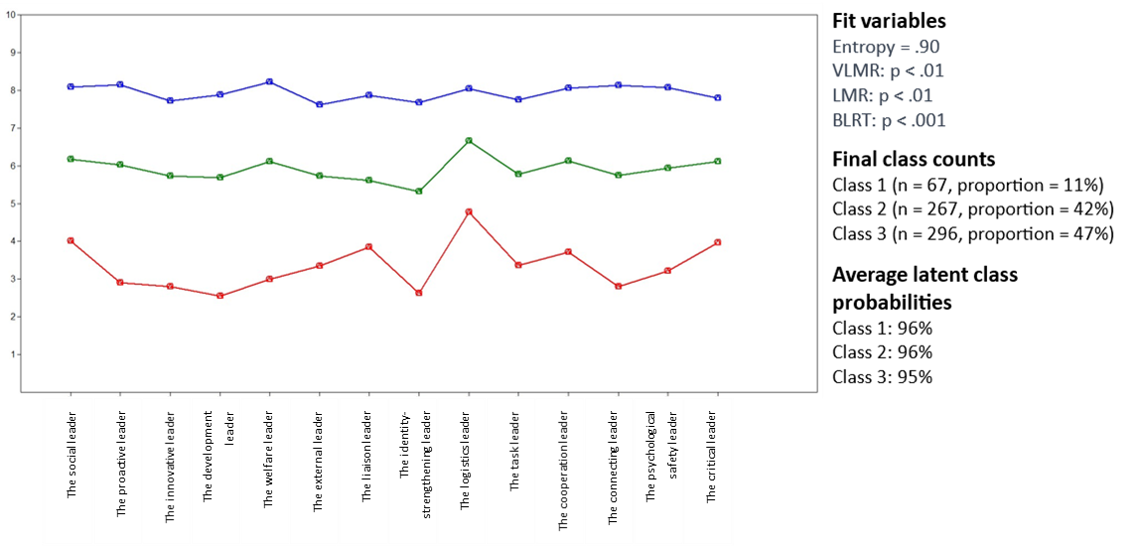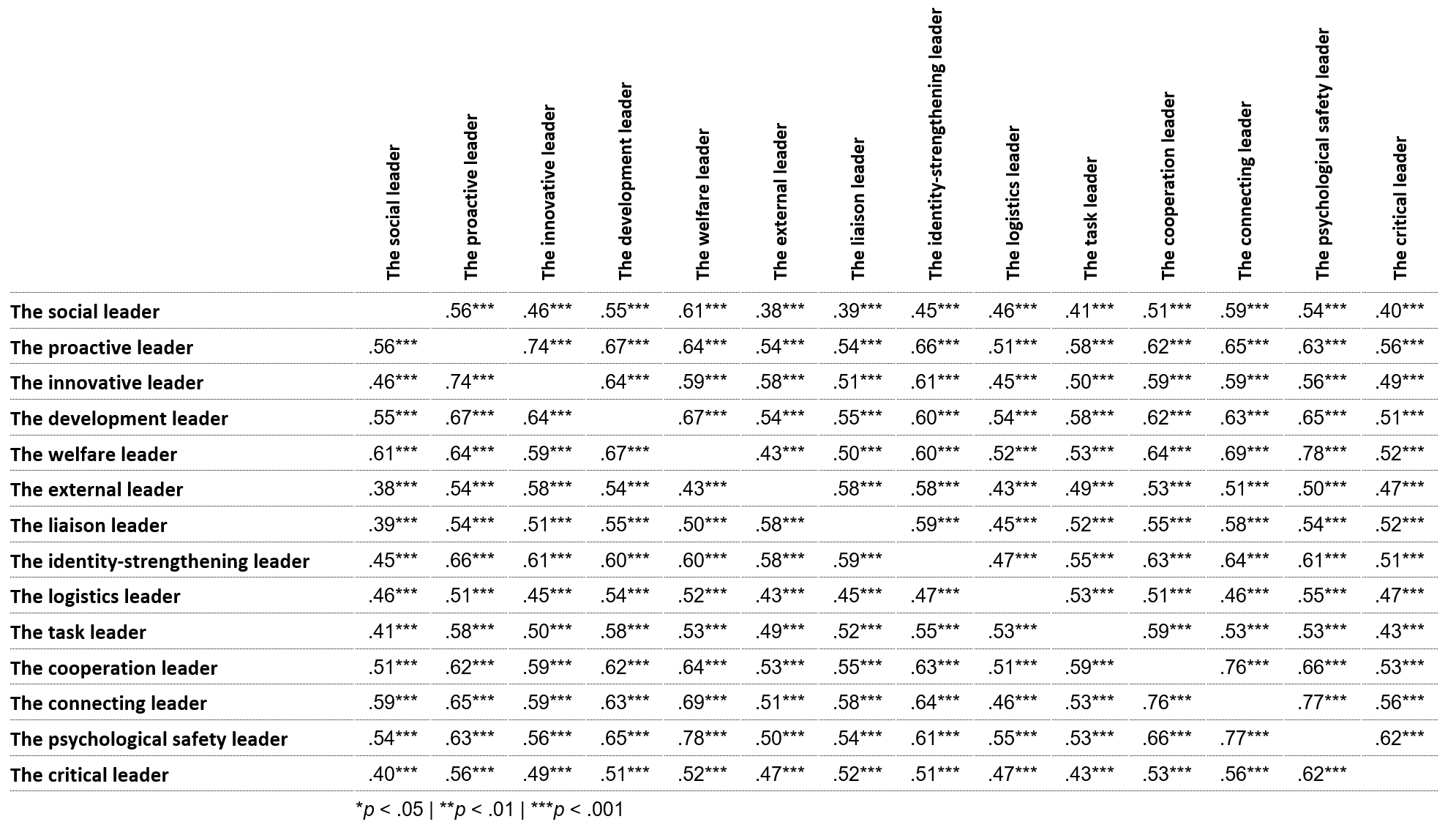Relevance of peer leadership roles
The subsequent graphs present the questionnaire responses, providing visual representations for how many participants considered the roles to be not relevant, relevant but not fulfilled, and relevant and fulfilled. To illustrate, 6% of participants in the total sample perceive the role of the social leader as not relevant; 9.3% consider the role of social leader as relevant, but indicate it is not fulfilled in their team; and 84.7% consider the role of social leader relevant and indicate it is fulfilled.
The social leader
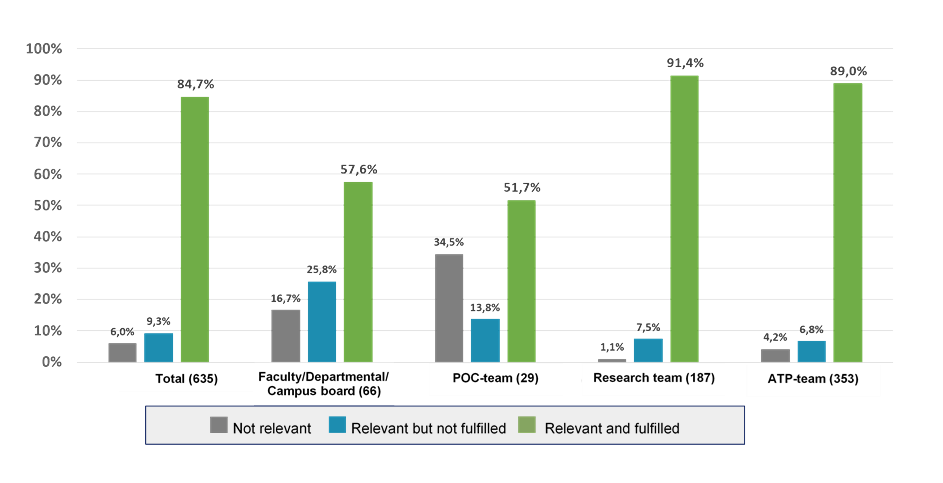
The proactive leader
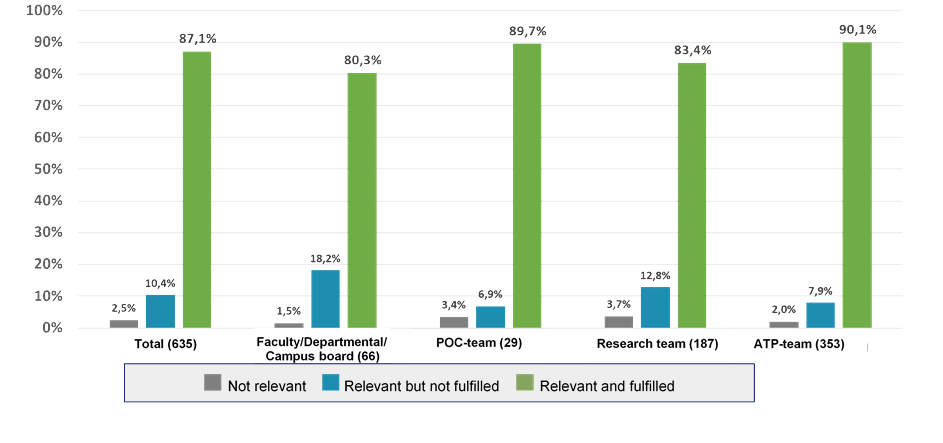
The innovative leader

The development leader
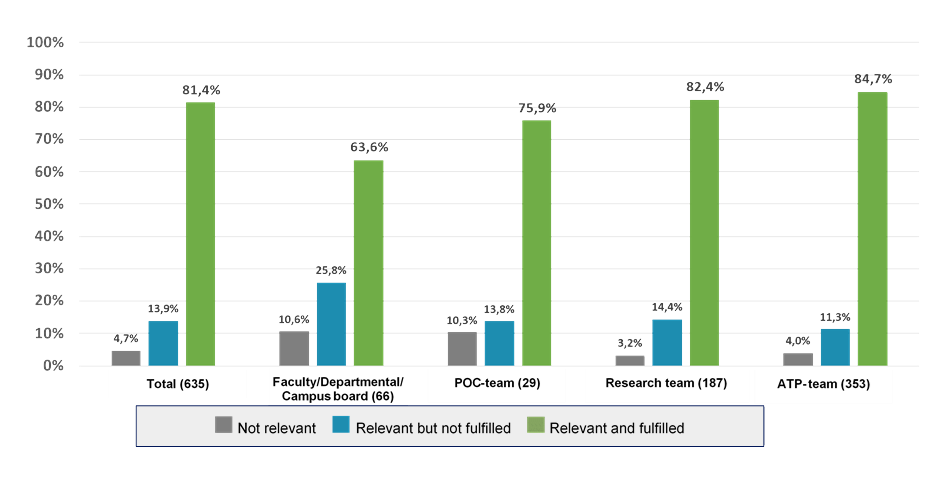
The welfare leader
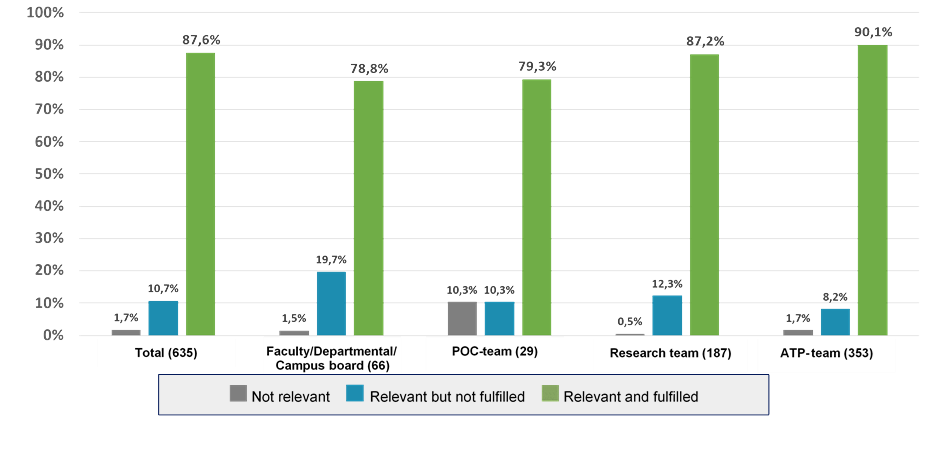
The external leader
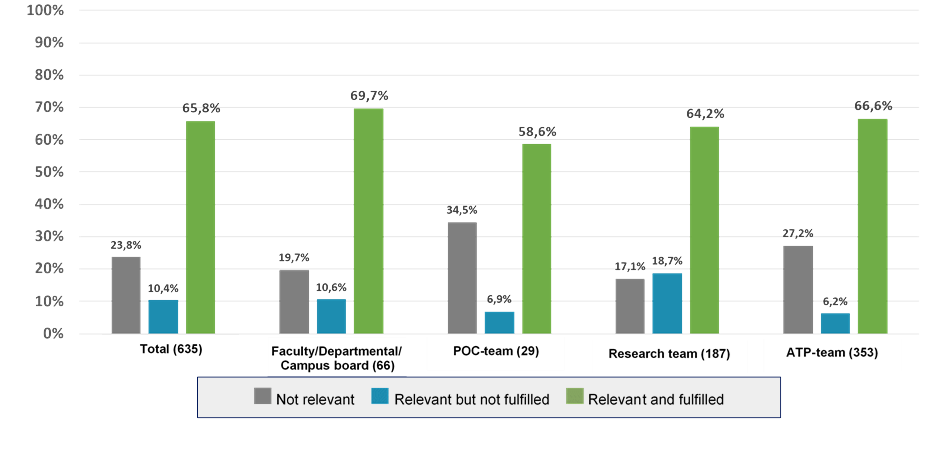
The liaison leader
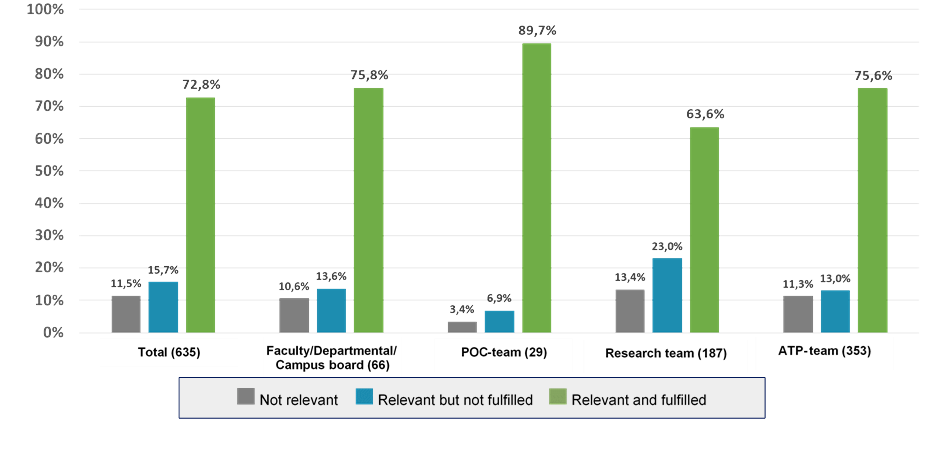
The identity-strengthening leader
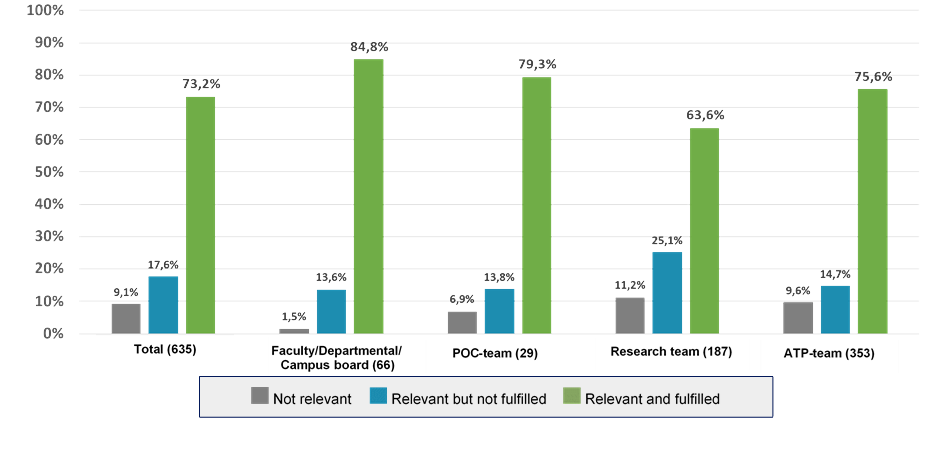
The logistics leader
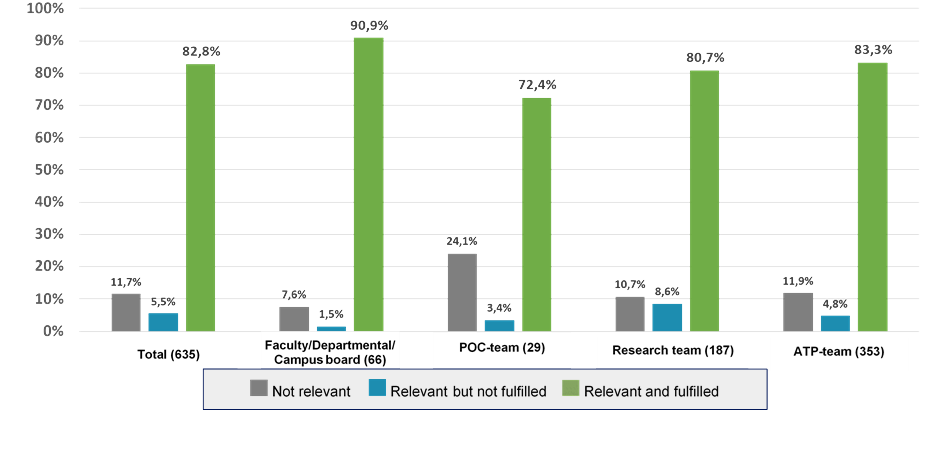
The task leader
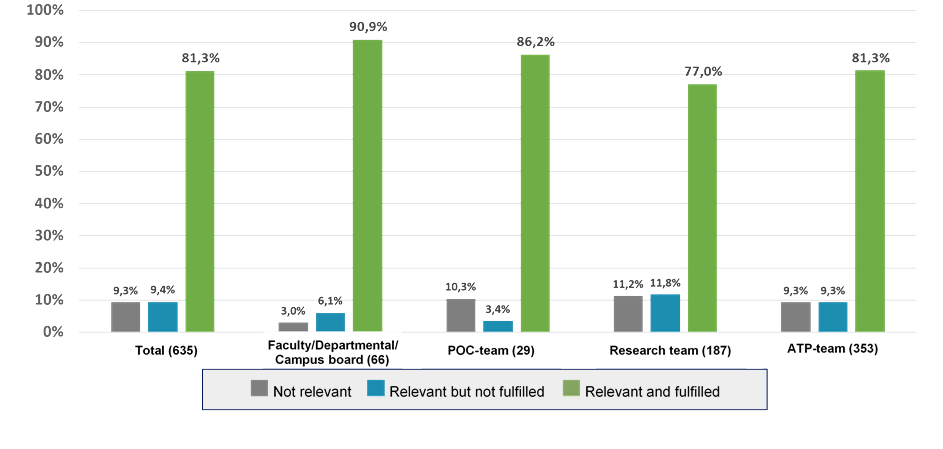
The cooperation leader
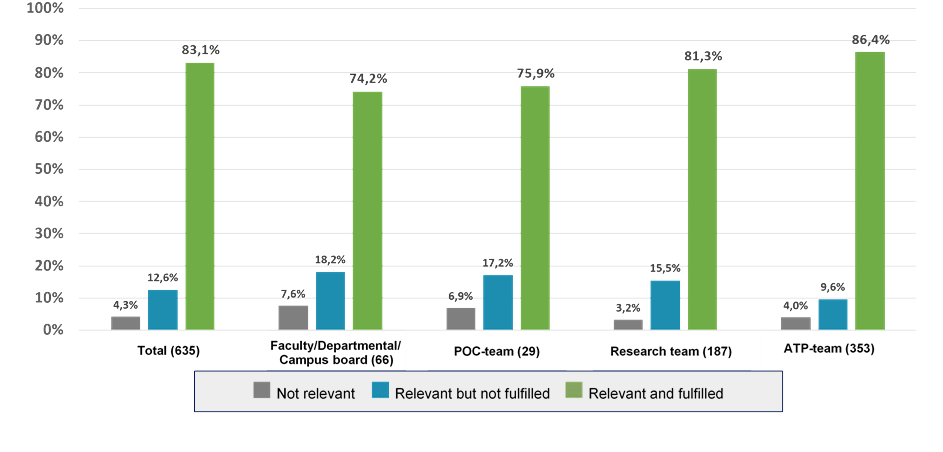
The connecting leader
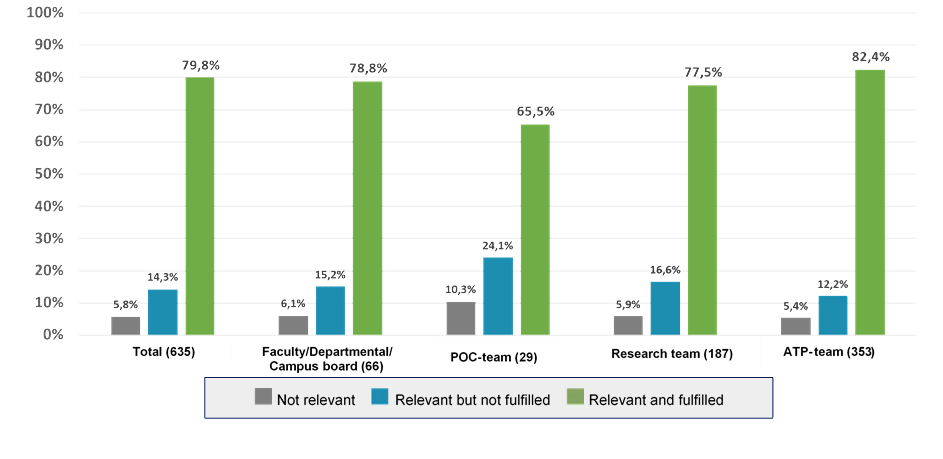
The psychological safety leader
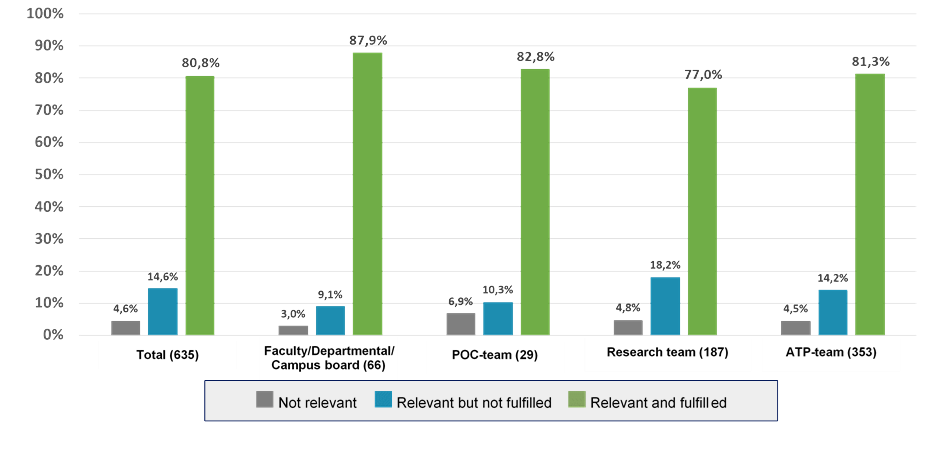
The critical leader
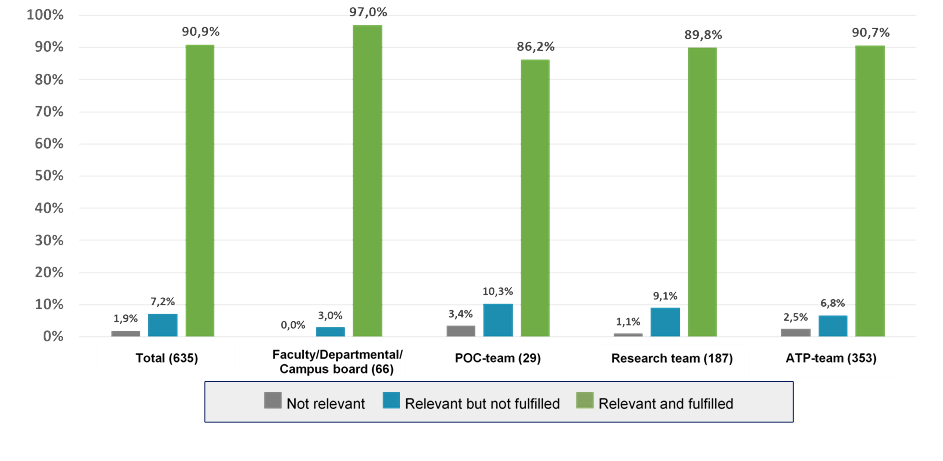
Perceived quality of peer leadership roles
The following graphs depict the average perceived quality of peer leadership roles. Error bars are incorporated to represent the standard deviations. These averages ranged from 6.1 to 7.0, measured on a scale from 0 to 10.
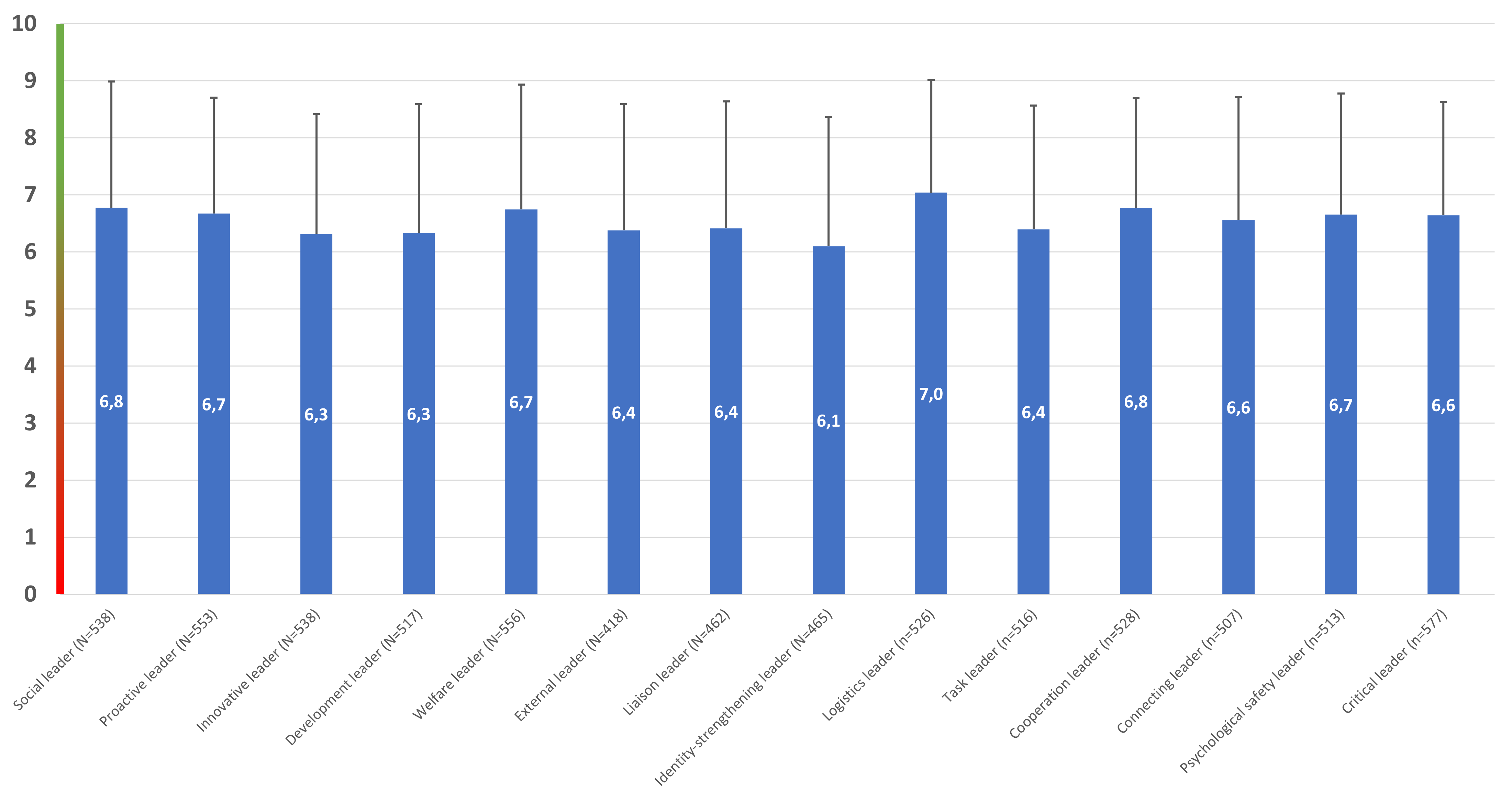
The following graphs depict the average perceived quality of peer leadership roles for faculty/departmental/campus boards, POC-teams, research teams, and ATP-teams. Error bars are incorporated to represent the standard deviations.
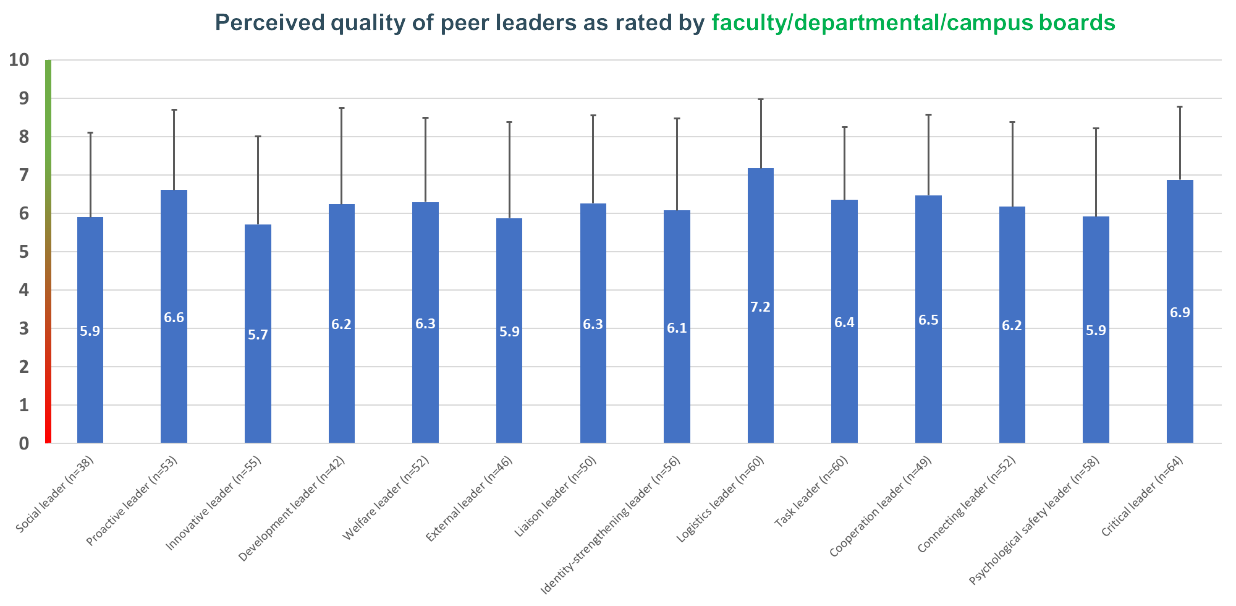

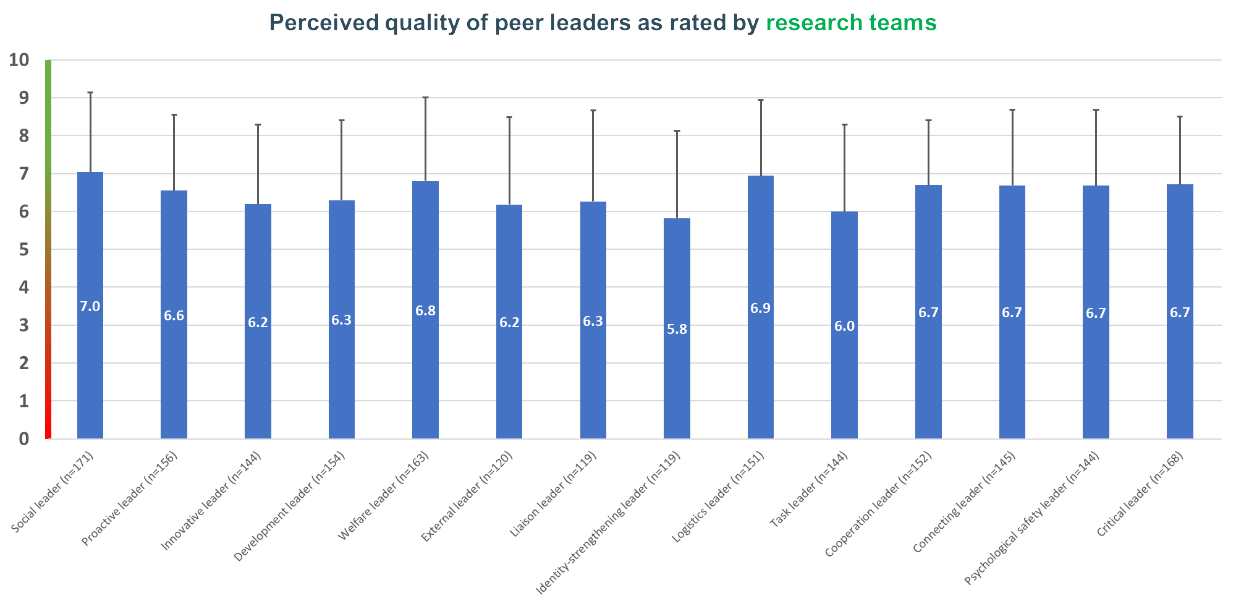
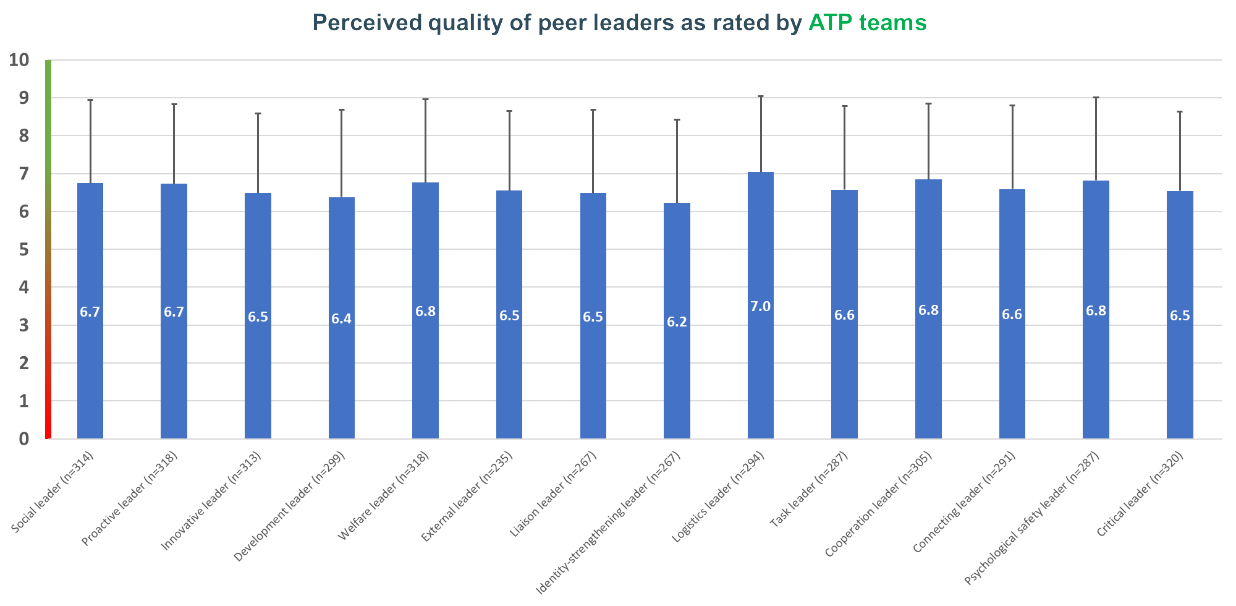
Latent profile analysis
Next, we performed latent profile analyses using M-plus, in order to identify underlying latent profiles or distinct patterns of leadership behaviour. By conducting latent profile analyses, we aimed to identify potential distinct combinations or configurations of leadership roles that tend to co-occur together.
The findings for peer leadership roles mirrored those of formal leadership roles. Similarly, no distinct profiles displaying unique combinations of some peer leadership roles with higher scores and others with lower scores emerged from the data. Also here, the latent profile analyses indicated that peer leadership roles tend to co-occur together. In essence, if the peer leader(s) fulfil some peer leadership roles in a high-quality manner, it is likely that also the other peer leadership roles will be perceived as being fulfilled effectively.
